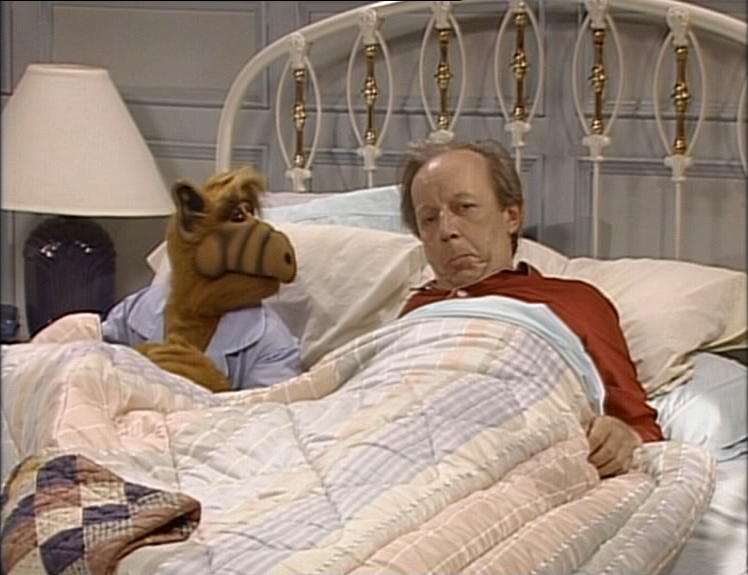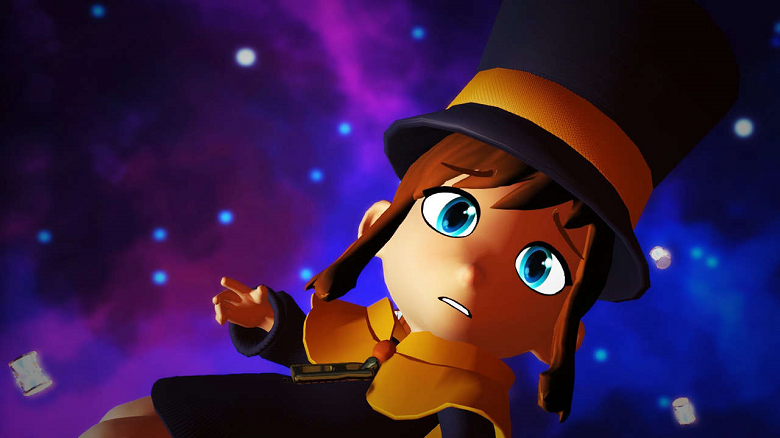
I love A Hat in Time. And I hate it. It contains a large number of things I’d point to as absolutely perfect examples for other games to emulate, and an equal number that I never want to see done again. It does almost everything that isn’t important perfectly, and almost everything that is important poorly.
It’s a beautiful mess. It’s the worst game I’d recommend wholeheartedly. Everybody should play it, but it’s a shame they’ll feel so frustrated as a result.
I first learned about A Hat in Time years ago. I wasn’t actively looking for it and I didn’t actively follow it, so I can’t say for sure that I learned about it through the Kickstarter announcement. Likely enough it was after it had already been successfully funded. Either way, I remembered the distinctive look of the main character and little else. The next I heard of it was just a few months ago, when I learned it was about to be released for PS4.
The early reviews were positive, so it landed on my radar. Then more reviews came in. And more. And they were all positive as well. I intended to wait for a sale but, at some point, figured I might as well support an indie developer with a full-price purchase. After all, the game was evidently quite good. Why not contribute to its success?
I don’t regret my purchase, but I do feel conflicted in a way I’ve felt with almost no other game. Typically I either enjoy a game or I don’t. We can get more granular than that, of course, but I nearly always at least know which side of that dividing line the game ends up on. Here, though, I’m not as confident pinning it down.
It’s great. It truly is. It’s a wonderful, memorable, addictive, charming experience. It’s also, in many respects, a fundamentally bad game. So how do I rectify that?
Maybe I don’t. Maybe I just find some way to live with the fact that the game wasn’t what it could have been. But even then, I’m not sure that’s correct. It does fail to meet its own potential in some ways. In other ways, though, it exceeds them to such thrilling extents that I want to proclaim my conflicted love from the rooftops.
So what, exactly, the fuck, is going on here?
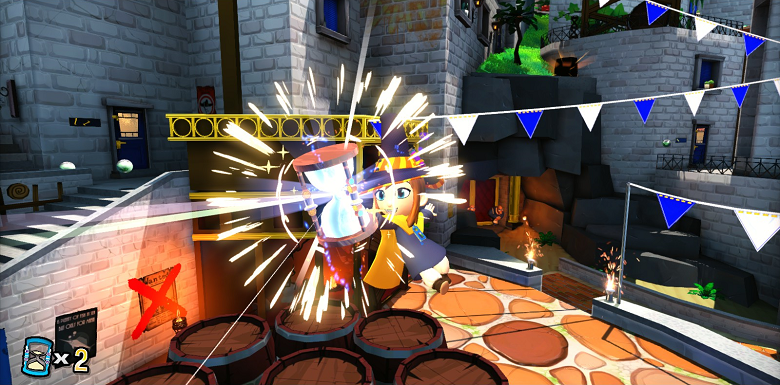
A Hat in Time is a retro-influenced collectathon throwback, which is basically to say it’s a 3D platformer decidedly in the vein of Super Mario 64. Modelling yourself so openly and directly after one of the most influential video games of all time seems like the kind of thing that can only make you look bad by comparison, but A Hat in Time actually pulls it off. This is its greatest achievement.
Super Mario 64 was a great game, and I’m using the past tense there on purpose. Through no fault of its own, the game has since aged. If you haven’t dusted it off since the Nintendo 64 era, do so. You’ll find a game that’s still a lot of fun and certainly retains its charm, but it’s also clunky. Its camera is stubborn. Many of its later levels lack focus, or ignore the philosophy of exploration that should be at the heart of the game. A handful of its puzzles are inscrutable. Creatures run off with important things (such as stars or your cap) and force you to wrestle with the camera and the environment simultaneously as you chase them down in irritation.
Again, though, this is through no fault of the game’s own. Super Mario 64 laid down the template for any 3D platformer worth its salt to follow, which is a profoundly impressive accomplishment. But the problem with going first is that you’re rarely the one that does it best. Every game to follow — Nintendo-made or not — had the luxury of studying Super Mario 64, of finding ways to improve it, of, basically, pushing the genre ahead from there.
Fast forward to today and play a few hours of Super Mario Odyssey. Hell, play 30 seconds of Super Mario Odyssey. Any complaint you may have about Super Mario 64 is addressed and made redundant by that successor, and certainly all of my complaints above are rectified as well. Super Mario 64 was very good at what it set out to do, but the games that came later were able to build on it and were better for that opportunity. The forefather of 3D platforming looks and feels a bit crustier with each passing year. Nothing makes that clearer than Super Mario Odyssey, the game’s own descendant.
A Hat in Time therefore has quite an opportunity to overshadow its inspiration. It couldn’t possibly hope to be as memorable or influential, but it can at least study Super Mario 64, pluck out the bits that don’t work, lean into the bits that do work, and build its own identity around the margins.
And, to its massive credit, that’s almost exactly what it does.
Let’s start with that identity, because it’s important, and it’s A Hat in Time‘s greatest asset.
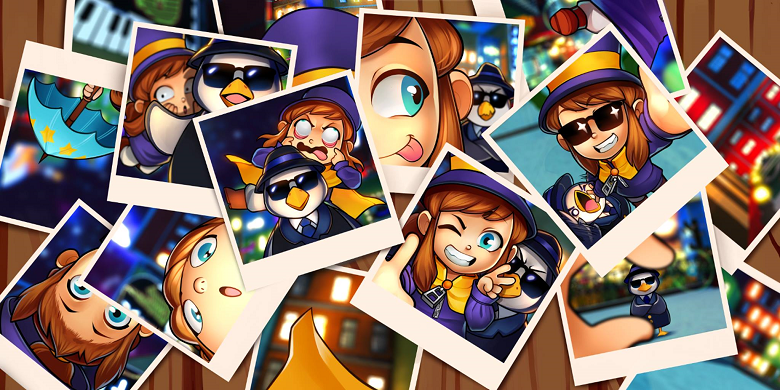
Mario has a lot of passive personality (his groans of disappointment when he fails, his joyful whelps as he leaps around, the little dances he performs and poses he strikes when he completes a level), but not much character. This isn’t necessarily a problem — the global, consistent success of his games proves that — but it does mean it’s one easy area for A Hat in Time to run circles around him…and the game does.
The otherwise unnamed Hat Kid is bursting with infectious personality. She’s silly. She’s bratty. She’s a fun-loving scamp. We don’t hear her launch into monologues about her feelings, but she does make them known in other ways, such as the mocking faces she pulls at the residents of Mafia Town, the way she spins around in her captain’s chair when she sits down, or the way she keeps one eye shut for a while afterward if you accidentally slam her into a wall.
She feels real. You have complete control over what she does in terms of gameplay, but between and around your inputs, she asserts herself as an autonomous being. She exists. I might be able to imagine bumping into Mario in a shopping mall, but I’m not sure why he’d be there or what purchases he’d be carrying. I can, however, imagine those things about Hat Kid, along with her demeanor, the stores she’d want to visit and avoid, and the specific ways in which she’d torment the salespeople.
The story is so thin as to be essentially absent, but that works in the game’s favor. (And let’s not kid ourselves; Super Mario 64 didn’t have a story, either.) Hat Kid’s ship spills its precious cargo / fuel source — time pieces — and our heroine needs to track them down across several worlds. That would be that, except that the nefarious — and equally charming — Mustache Girl gets a sense of their true power, and seeks to horde them for herself.
It’s up to Hat Kid to find the time pieces, bop the bad guys, and guide her ship back home, all with the aid of a collection of hats that imbue her with special abilities. I’m sure it’s just a coincidence that Mario’s cap was the source of his powerups as well, right? Alright, probably not, but there is a difference. Nintendo didn’t want Mario’s caps to break the game, so it only allowed his powerups to function for a brief period of time. That would keep players from taking them into areas that weren’t designed for them. In A Hat in Time, though, Hat Kid can switch between them at will, and can use any of them she’s collected at any point in any area. This game provides the actual freedom that Super Mario 64 only suggested.
The sheer amount of personality in this game is staggering. Everything looks, feels, and sounds great. The background gags are always fun to find and are actually pretty funny. The dialogue got more than a few laughs out of me, from genuinely great jokes to cute jabs at genre conventions. And pretty much any time the profoundly expressive Hat Kid does anything, it’s worth a chuckle.
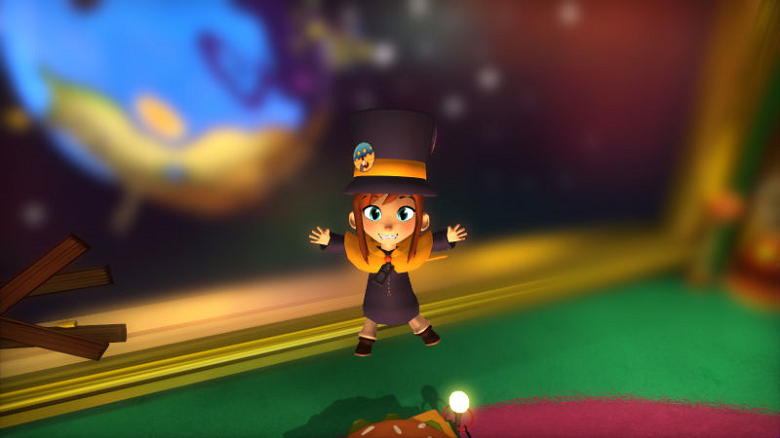
The graphics themselves aren’t anything impressive, but they pay appropriate homage to early polygonal games while still (clearly) improving on their visual quality. They also have a great deal of spirit and inventiveness behind them, even if they are simple when compared to games with larger budgets. Without question, though, the 2D art we see before each level is a consistent highlight, and is always gorgeous. They feel like promotional images from the Hat Kid cartoon we never had in our childhoods, but would have absolutely loved.
A Hat in Time is relentlessly adorable, and I’m not sure I’ve ever seen a cuter game in my life.
In addition to its much stronger personality, A Hat in Time also improves upon the level and goal design of Super Mario 64.
As a child I collected all 120 of Super Mario 64‘s stars, but I needed a lot of external information in order to do so. Nintendo Power and other guides lit for me the paths that weren’t clearly enough indicated by the game. By contrast, I gathered all of A Hat in Time‘s time pieces without any kind of aid at all. Not all of them were easy to find; it’s just that the game did a far better job of providing the information I needed in order to find them. A Hat in Time scratches the same itch as Super Mario 64, but without the frustrations we’d have about that game in this era of more enlightened game design.
In fact, in regards to the way in which certain time pieces are hidden in the levels, A Hat in Time outdoes Super Mario Odyssey. In that game, vague visual clues are sometimes found scattered throughout the levels. The game wants you to take a screenshot and consult it later to find a hidden power moon, which is fine, but it isn’t any fun, especially as many of the clues require an extraordinary amount of lateral thinking to work out. The answer is there, but you’re often expected to pore over the clue as you would one in a puzzle book, which isn’t very much fun when you’re sitting motionless on the couch for minutes on end with a controller in your hands. A Hat in Time, by contrast, provides an optional photograph of where the hidden time piece is. No screenshotting or puzzling out is necessary. You just look at the photo and soak in as many of the background details as you can, so that when you explore the level you can narrow down and eventually zero in on its location. It’s actually fun, because it gets your character moving, exploring, and attempting. You know…the things we like to do in video games.
For these hidden time pieces, A Hat in Time also takes a page out of Super Mario Sunshine‘s book, right down to the simplified, geometric visual design of that game’s secret areas. In both games, these sequences are a notable highlight, but the ones in A Hat in Time largely feel better and are more fun to play. In Super Mario Sunshine, the main gimmick of those levels was that you lost FLUDD, Mario’s water-powered jetpack, and you had to get by with your standard moveset. This made sense, but it also says a lot that the best parts of Super Mario Sunshine involve the game’s main mechanic being stripped out completely. A Hat in Time takes nothing away. Anything you can do in the rest of the game, you can do in these levels as well. Super Mario Sunshine had to ignore itself in order to provide these challenges. A Hat in Time embraces itself.
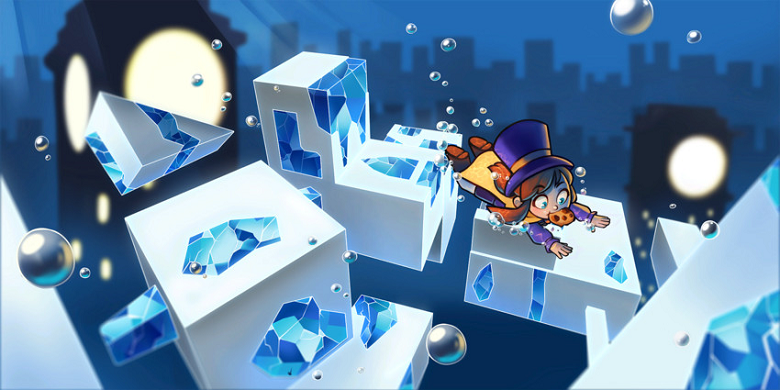
More favorable comparisons come from the levels themselves. While A Hat in Time has only five main levels and 40 time pieces to find, it almost always feels more expertly crafted than Super Mario 64. And while I know that’s bound to be a controversial opinion, perform this simple thought exercise: summon up all of your positive memories of Super Mario 64. Every moment you truly loved. Okay? Now set them aside. Next, summon up every moment of frustration in Super Mario 64. Every time you died because you couldn’t see where you were going, or didn’t know what you were supposed to do, or because the controls were too responsive or not responsive enough. Now set those to the other side. That’s…a pretty big pile, isn’t it?
Super Mario 64 did a lot of things very well. That’s a fact. And if you only look at its best moments, it’s far superior to A Hat in Time. However, if you look at the many (many, many) things it did poorly, A Hat in Time is the clear winner. It has its low points as well, but they aren’t as low, and certainly aren’t as numerous.
A Hat in Time is more consistent, in short. Super Mario 64 begins a delight and ends a chore. A Hat in Time starts at a high level of quality and almost exclusively stays there. It’s a solid game, and while Super Mario 64 had more ideas, A Hat in Time arguably handles its smaller amount in better ways.
I won’t spoil the game’s final level, but the four others aren’t just various open worlds with different color schemes. Mafia Town, the opening level, is the most like Super Mario 64‘s early stages. It’s large, its terrain is varied, it’s fun and easy to explore, and it’s packed with things to find. It’s a sunny, silly intro that sets the tone for the entire adventure.
After that, we take an unexpected detour into a movie studio, with objectives taking the form of films starring Hat Kid. Then there’s a spooky forest with a devilish character that keeps fencing you into signing contracts relating to your eternal damnation. In each of these levels, you choose an objective, the path to which is highlighted with a decidedly Mario-like camera pan.
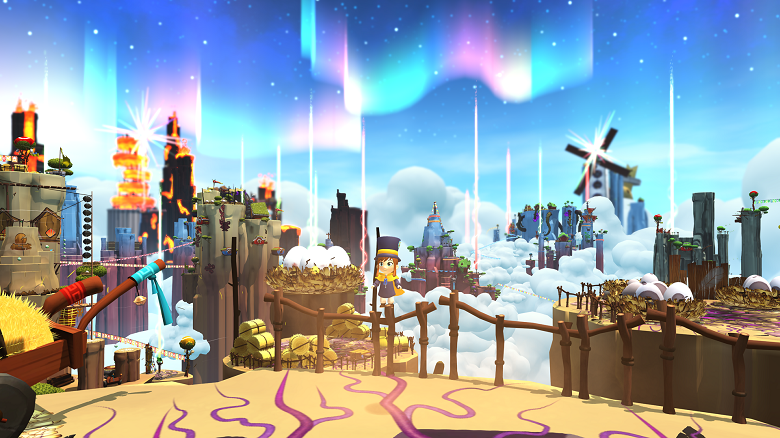
In the fourth level, Alpine Skyline, that disappears completely. Your objectives aren’t spelled out for you anymore. You instead have to use the explorational skills you’ve developed in the previous levels to “read” the area and figure out what you need to do. I’ve seen other people grumble about this online, but, to me, it worked wonders. It reveals the objectives of the previous levels to have been something like training wheels, and Alpine Skyline challenges you to ride alone. Personally, I loved it, even if it took me a bit longer than it should have to twig what was going on.
To be blunt, there were levels in Super Mario 64 I hated playing, and still avoid whenever I can, even if I liked the concept. Lethal Lava Land, Hazy Maze Cave, Tick Tock Clock, Rainbow Ride…they just weren’t any fun. In A Hat in Time, I loved every area. Not equally, of course, but I never dreaded returning somewhere to fetch a time piece. In fact, I looked forward to it, and felt a little disappointed when I had entirely cleared an area, because that meant I had exhausted all of its surprises.
And, man, does A Hat in Time have surprises. I don’t want to spoil much here, but there are times that the game flows wonderfully into an escape sequence, a stealth sequences, a scavenger hunt, or even, once, a murder mystery, and it still feels right. It still feels correct. Super Mario 64 didn’t really have massive shakeup moments like that, or at least not many of them. And that’s fine; that game was a 3D platformer. But A Hat in Time shifts into and out of these memorable setpieces without ever feeling like it’s losing focus. They’re all equally valid elements of the game’s rich personality.
The music, as well, is some of the best I’ve heard in years. It does extremely clever and subtle things depending on where in a level you are, what you’re looking for, or what you’re up against, with the soundtrack shifting so naturally from one approach to another — or one set of instruments to another — that picking up on it is just one more pleasure to experience. There isn’t a weak track in the game, and some of them even have unlockable — just as good — remixes to collect.
If you’d like to believe A Hat in Time is a masterpiece, be my guest. Stop reading right now. I stand by everything I’ve said above, and, if you like, you can choose to leave with the idea that this game succeeds in providing an equivalent to Super Mario 64 for today’s generation.
You won’t be wrong. The game is beautiful.
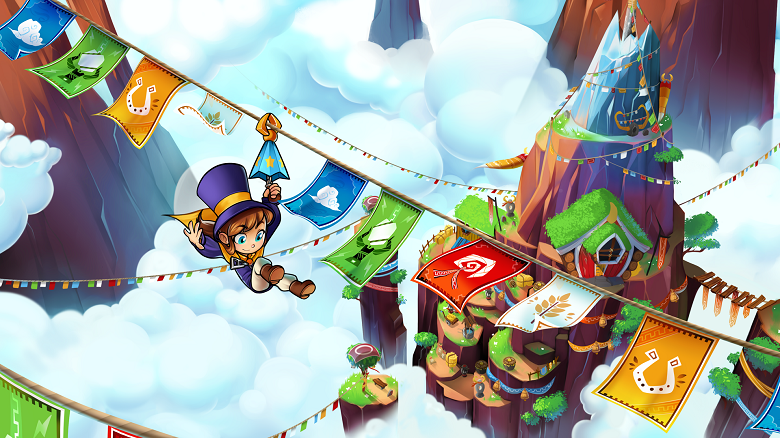
But it’s also a mess.
The main issue and most consistent problem is the camera, which, to be blunt, is awful. When I look at the graphics, I have no problem with them being a marginal improvement on Super Mario 64 and yet miles behind current standards. When I say the same thing about the camera, though, I’m spotlighting a serious issue. Graphics don’t affect gameplay. The experience of actually playing the game doesn’t change in any notable way depending on how things look. Your enjoyment may be enhanced or diminished, but the gameplay itself isn’t affected.
In a 3D platformer, you can’t say that about a camera. When the camera fails to function, or functions poorly, it’s as much as problem as unreliable controls. The camera doesn’t just factor into the gameplay; it’s crucial to it. And so, yes, the camera in Super Mario 64 was pretty terrible, as we’ve discussed above. It zips between pre-determined notches, even if what you want to look at lies between two of those fixed positions. It cares about where Mario is, but not about where he’s trying to go, which is a problem whenever he needs to navigate small platforms and tricky jumps. It often behaves like an obstacle in itself, forcing you to manage it while you’re also trying to pull of complex maneuvers in treacherous areas. It’s bad.
A Hat in Time fixes much of this. The camera is easier to move. It’s much more versatile. It’s programmed to swing out and provide wider views during certain areas of the level, to give you a better sense of how to get where you’re going. This is all great, and it’s an improvement on Super Mario 64. However, this game’s camera introduces its own problems, and moderately outdoing the technology of a game that’s more than 20 years old isn’t much of an accomplishment.
Now, in full disclosure, I watched a video review that talked about how great A Hat in Time‘s camera is. The reviewer discussed all of the wonderful ways it avoids to problems people often have with cameras in 3D platformers, from foreground dithering to the smart way it changes perspective on its own. He gushed about it as though Jesus Christ himself had returned to redeem us from camera issues forever. So it’s possible that the PS4 version has camera problems that other versions don’t. To be honest, though, I think the solution is simpler: that reviewer was lying.
This isn’t a question of opinion, taste, or preference. This is a question of basic functionality. And while it’s certainly possible to 100% A Hat in Time, the camera keeps that from being a wholly fair experience, and often turns it into a frustrating one.
In many cases, the camera’s pre-programmed behavior worked against me. Yes, it’s nice that it’s smart enough to zoom out to show me all of the small platforms I’ll have to navigate, but what if I’d prefer not to see all of them and would rather focus on a single jump at a time? Too bad; many of the times the camera behaves autonomously, it also locks, preventing you from overriding it. Other times it poses a different problem; I might move the camera so that I can get a good view of where I am and where I want to go, and it works fine. But the moment I jump, the camera whizzes away to show me the leap from its preferred angle, throwing me off. It either doesn’t move, or doesn’t stay put.
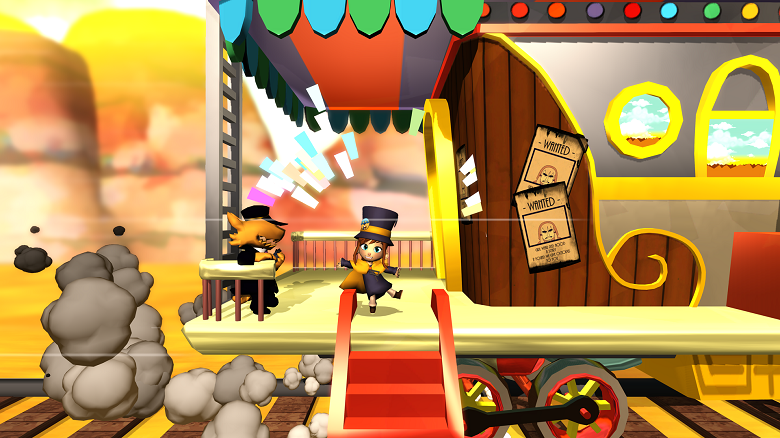
This is especially problematic when combined with the fact that the game doesn’t do a great job of helping you gauge distance when you’re not moving. Many times I need to move the camera in order to get any sense of whether or not a jump can even be made…but I can’t. So I just have to leap and learn that a platform was either much closer or much further away than it seemed.
While that might sound like an exaggeration, I encountered both issues regularly. Many times the only path forward seemed to take me over a gap that looked far too wide to jump…but I could actually jump it easily, and the perspective was just throwing me off. Other times I fell to my death because I couldn’t actually reach something that looked to be only a short hop away. If I had more and better control of the camera, this never would have happened.
A Hat in Time does seem to realize it has a problem in this area, and it addresses it in a few ways. By placing collectible gems around the stage, it often leads your eye to the correct way forward. In fact, many times, the presence of gems was the only reason I thought I could clear a jump at all. It’s not an elegant solution, but it’s a fair one.
Also fair is Hat Kid’s shadow, which helps you see where you will land and gives you a sense of how you should maneuver in the air. The problem here is that the shadow disappears between floating platforms, making it almost useless as an aid to orientation. What’s more, the platforms are either small enough that seeing your shadow return doesn’t leave you with much reaction time, or so large that it doesn’t matter specifically where you land anyway. It’s a nice thought, but it only ever works when you don’t need it.
Then there’s Hat Kid’s double jump ability. Now, I’ll say here that I really enjoy Hat Kid’s moveset. When you’re flipping and somersaulting her through wide, expansive areas, it’s a lot of fun. Kudos to the game for that. But in the difficult platforming sections, the game seems to use the fact that you can double jump as an excuse for its own shoddy layouts.
In the same video review I referred to above, A Hat in Time‘s lead designer talked about the double jump as an opportunity for the player to correct his or her own mistakes. To paraphrase, the idea was that you could realize you misjudged a jump and then quickly jump again in the air to rescue yourself from your error. My response is the same as above: he’s lying.
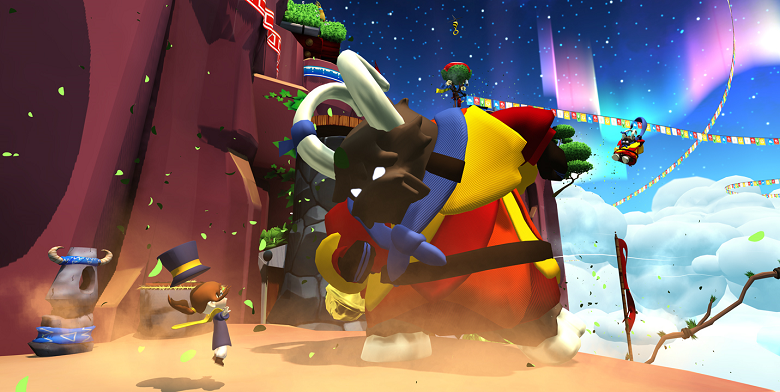
See, that may be the move’s true origin, but it doesn’t reflect the way in which it’s actually used and required in the game. If that’s the purpose of the double jump, then it shouldn’t be necessary to use it to clear long gaps in the first place. If it’s there as a last-ditch salvage effort, it can’t be mandatory for certain jumps as well. But, of course, it is.
As a designer, you can either employ this mechanic as a bonus flourish, or as a necessary means of progression. A Hat in Time seems to think it can do both, but it really can’t. The reason for this is the difficulty in judging distance that we’ve already gone over. Because it’s hard (sometimes almost impossible) to tell how far away the next platform is, you don’t know if you’ll need to use that double jump or save it. In short, if the developer were telling the truth and every gap could be cleared with a single jump, the player would learn that and the double jump would serve the dedicated purpose of bailing you out of your mistakes. And if every gap needed a double jump to clear, the player would be able to learn that. Instead, some require a single jump, some require a double jump, and it’s not clear until you’re in the air (or falling out of it) which was which. It’s often a guessing game. Try to clear a gap with a single jump, and by the time you realize you need another one, you’ve already fallen too far for it to matter. Try to clear a different gap with two jumps and you’ll find you’ve overshot the platform and have no way of going back.
It isn’t fun, and it isn’t rewarding. Again, I want to make it clear that I explored every area and found every time piece in the game. It can be done. I’m not saying this because I’m so bad at A Hat in Time that I’ve decided to declare it impossible. Instead, I’m saying this because I gave the game more than enough time to teach me what to expect and how to respond to it, succeeding at each of its most devious challenges, and I still think it’s poorly designed in that regard.
Additionally, the camera doesn’t easily allow you to look up or down, which is a truly baffling decision in a game with so much vertical design. Typically a limitation like this would clue the player in to the fact that all or most of the action will be conducted horizontally, but vertical progression is frequently required in A Hat in Time…and you just have to deal with the fact that you’ll be doing it blindly. This is inexcusable. And, again, it’s not a matter of taste or preference. When the game asks you to ascend or descend a structure safely and you can’t actually look at where you’re meant to be going, that’s a failure of basic functionality.
There are also control issues. While Hat Kid seems to respond perfectly well to what I tell her to do, and that’s great, the game doesn’t always play by its own rules. Sometimes it will allow Hat Kid to grab a wall and climb up, and other times it won’t. Sometimes it will provide a prompt for Hat Kid to grab a hook or dive onto an enemy, and sometimes it won’t. Sometimes invisible barriers, especially in the fourth level, prevent Hat Kid from making jumps she should easily be able to, and you end up falling to your death through no fault of your own.
These are fundamental problems. If it’s up to Hat Kid to find the time pieces and bop the bad guys, the game actually needs to let you do those things reliably. Fumbling around while you learn the controls is one thing, but fumbling around many hours later in the vague hope that the game will obey its own rules is something else entirely.
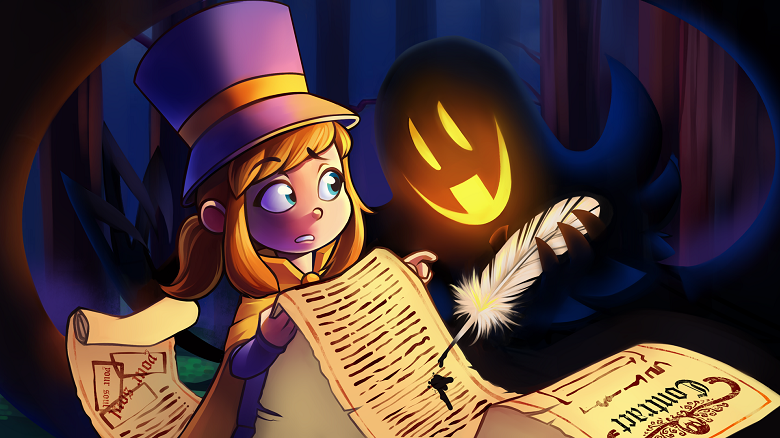
Again, A Hat in Time seems to be aware of its own problems, and rather than fix them, it provides a peace offering. Many areas are crawling with health restoration gems. After a long enemy gauntlet or an especially tricky platforming section, this makes sense. But more often they seem to be tossed around after very basic, simple challenges, which suggests to me that the game knows it is unreliable even in its easiest stretches.
Other areas require a number of crown coins to be collected before you can progress, and there are always more crown coins than necessary. At first I figured this was to provide an element of choice to the player, about which coins to collect and which not to. But by the time I got to a long sequence of crown coins on collapsing towers, which Hat Kid would sometimes climb and sometimes wouldn’t, I realized it was just because the game didn’t reliably function the way it should. It wasn’t a buffer for your sake, it was a buffer for its.
And that’s by no means everything. I’ve had enemy attacks land but deal no damage to me. I’ve fallen into bottomless pits without losing any life, and fallen into other bottomless pits that took away three units of life. (For the record, it’s supposed to take one.) I’ve had platforms I was standing on turn invisible. They were still there and I didn’t die, but the game must have thought they were off camera because it suddenly stopped rendering them, and wouldn’t start again until I changed perspective. I’ve had checkpoints fail to register. I’ve had to stop the game and scratch my head when A Hat in Time expected me to hop onto a series of tiny red balloons floating above a sea of red lava. Would it really have been so much to ask for the balloons to be literally any other color, so that I could actually see the damned things?
To be fair, A Hat in Time is an indie game. It had a small staff and a limited budget. I understand that there was only so much they could accomplish and only so much technical prowess they could possibly demonstrate. But while I can make those mental allowances in my mind, it doesn’t make the game’s problems any less frustrating. However much or little money was dumped into the game, I’m still the one dying my 10th time because I’m trying to go over here while the camera’s giving me a great view of the platform over there. I’m still repeatedly swinging my parasol against a bell that doesn’t ring until the fifth or sixth time I strike it. I’m still sliding down walls I was able to climb a moment ago.
And yet…
And yet.
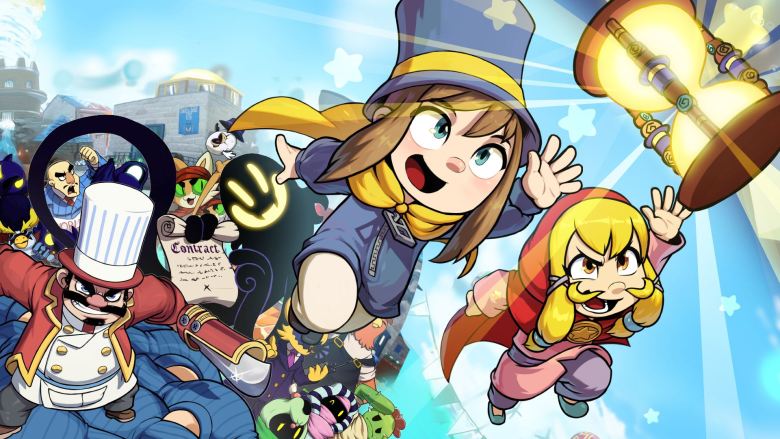
I also loved the game. I came home from work every day this past week and dove right back in. It was a fun and cheerful way to unwind. The knowledge that I still had some more secrets or areas to uncover was compelling me to play it over and over again. The frustrations would always be just on the horizon, but…I kept coming back.
I have played literally thousands of games that are better designed than A Hat in Time, that work more reliably, that exhibit more polish. But the vast majority of those I eventually lost interest in. I never finished. I never truly cared about.
A Hat in Time is often profoundly sloppy…but I couldn’t stop playing it.
In fact, I sat down to write this article after finishing the game. I knew I had missed three time pieces, but that was okay. I certainly had enough to say, and I could pick them up some other time.
…but just a few sentences in, I wanted to go back and get them. And so I did. I sat down again with A Hat in Time after I had finished, just because I knew there was something else to do. And I wanted to do it.
I said above that A Hat in Time does almost everything that isn’t important perfectly, and almost everything that is important poorly. Nearly all of the stuff I gushed about is nice to have, and the stuff I complained about is crucial to have.
But maybe that’s the real lesson here…that the stuff we think is important really isn’t, and the stuff we often dismiss as flourishes — great soundtracks, adorable characters, charm to spare — is what actually keeps up coming back.
I’m never going to argue that a game shouldn’t focus on getting its camera system or basic controls right, but how often do I return to flavorless, soulless games that are technically proficient? And how often do I return to the fun, memorable, quirky ones in spite of everything they do wrong?
I think we all have our own answer there, and I don’t think that acknowledging A Hat in Time‘s flaws marginalizes its accomplishments. I do, however, hope we get a sequel that irons out the kinks. A Hat in Time already does so effortlessly what mountains of other games struggle to. Now, all I want is a sequel that also plays as well as they do.
A Hat in Time is wonderful. You should buy it. You should set time aside to lose yourself in it. You should give yourself over to Hat Kid and Mustache Girl and the series of unique, funny, unforgettable worlds they inhabit. But you should also know that the game’s plumbing is exposed, and you’ll trip over it often.
A Hat in Time is the best game that ever sucked.
